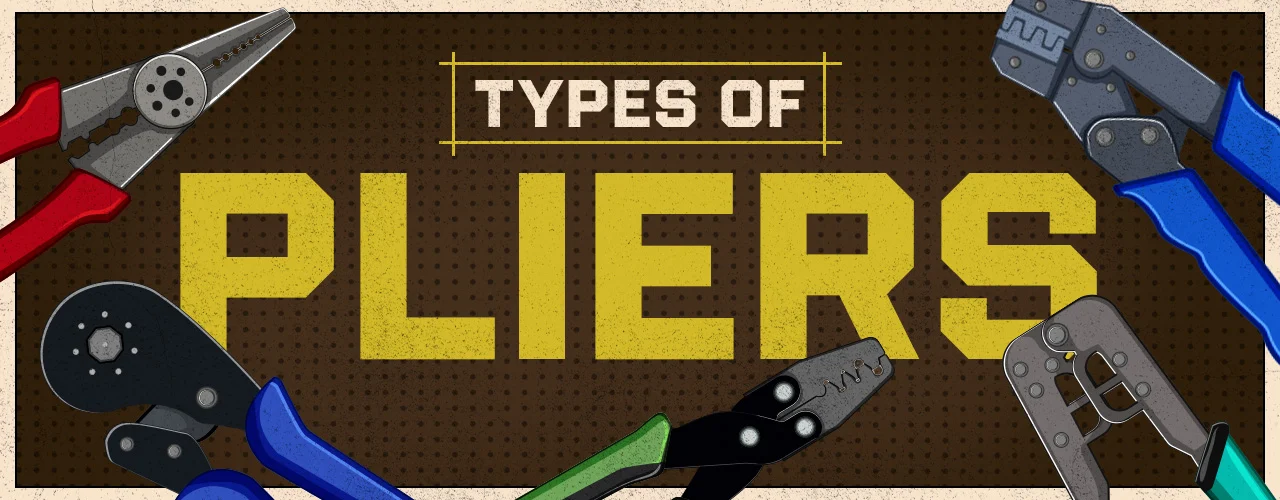Pliers are versatile hand tools used to grip, bend, turn, and strip objects with more force than you could apply on your own. They play an instrumental role in commercial, industrial, and construction settings, so whether you’re working on electrical projects, restaurant equipment maintenance, or general home or workplace improvements, having a reliable set of pliers is essential to create the perfect toolkit. There are several styles of pliers, each tailored to serve a specific purpose, and they come in different sizes, colors, and configurations to best fit your needs. Understanding the main types of pliers and their intended uses will help you choose the best tool for the job and complete your projects the right way.
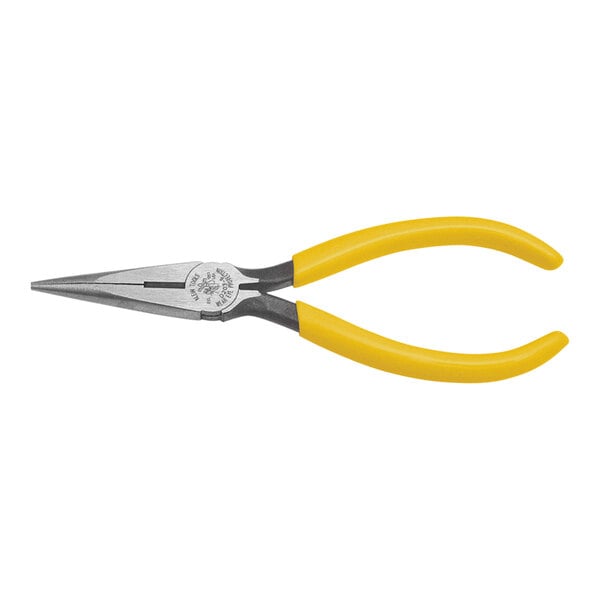
1. Needle Nose Pliers
Needle nose pliers, also known as snipe-nose pliers, are characterized by their long, distinct jaws with sharp, angular tips. Although they are often confused with long nose pliers, their jaws come to an angular point to set them apart. Needle nose pliers can manipulate small objects with precision, providing attention to detail that is essential for certain trades and crafts. Most versions feature a serrated edge around the nose, promoting enhanced grip strength when handling delicate or slippery materials. Some even feature built-in side cutters to easily trim wires or cables.
- Uses: Electrical work, wire work, artisan projects
- Jaw length: Long
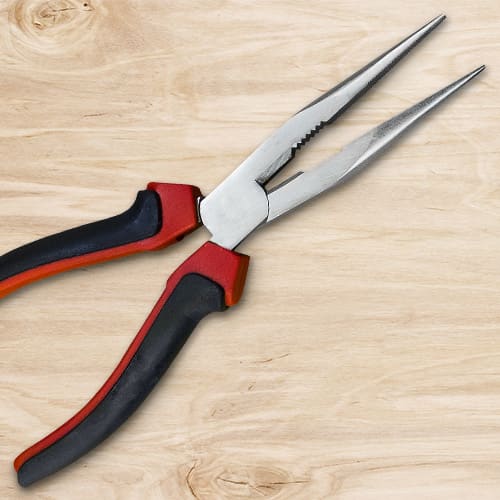
2. Long Nose Pliers
Long nose pliers offer similar function and versatility to needle nose pliers. The key difference is that they feature slightly wider jaws and a less pointed design. Although this results in a less precise tool, it creates a stronger, more secure grip as you work with delicate components, reducing the risk of damage and providing enhanced control. From bending wires to gripping tiny screws, long nose pliers offer the dexterity to handle delicate components with ease.
- Uses: Electrical work, mechanical repairs, artisan projects
- Jaw length: Long
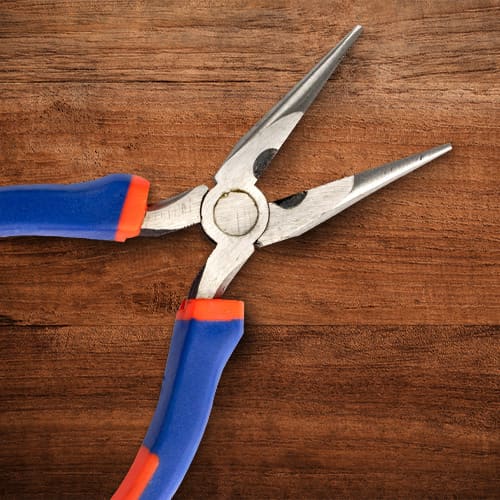
3. Round Nose Pliers
Round nose pliers are specialty pliers uniquely tailored for working with electronics and wiring. Their distinctive design features short jaws with rounded, circular edges that come to a fine point. The smooth surface and rounded tips of the jaws make them ideal for delicate tasks that require finesse, creating perfectly round edges when forming wire rounds or looping components. These pliers are most useful if you install intricate wiring, work with circuit boards, or create custom designs, helping you provide the necessary attention to detail that other pliers can’t.
- Uses: Electrical work, detail work
- Jaw length: Short
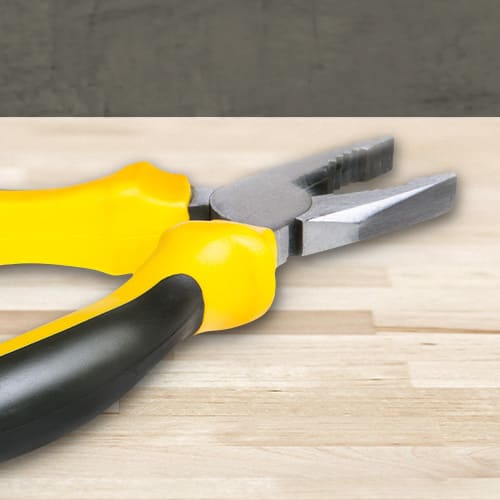
4. Flat Nose Pliers
Flat nose pliers feature medium-length jaws with flat, stubby ends that provide a stable grip while you work. Their smooth interior surface prevents scratches or scrapes on material surfaces, ensuring a clean and professional finish and minimizing damage. Whether shaping wires for intricate designs or making precise adjustments to metal components, flat nose pliers provide much-needed strength and accuracy. Look for durable construction and ergonomic handles for comfortable use during extended periods.
- Uses: Electrical work, wire work, artisan projects
- Jaw length: Medium
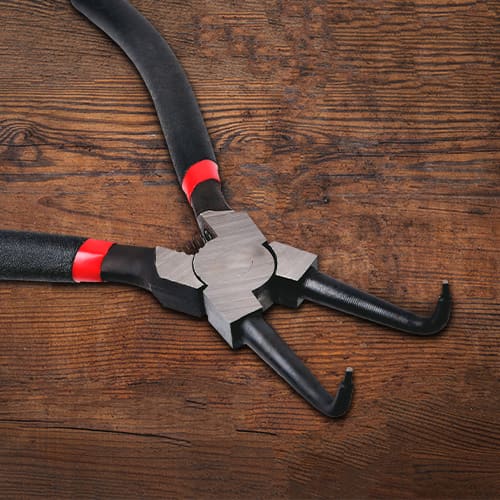
5. Bent Nose Pliers
Bent nose pliers provide precision, control, and accessibility as you work with components in hard-to-reach areas. They are instantly recognizable with their distinctive angled tips and jaws that curve or hook at the top. These features make them ideal for grabbing, hooking, or stripping wires in confined spaces while enabling users to achieve an angled grip, which can be especially useful for anyone who needs to complete delicate or detailed maintenance. Additionally, the bent tips of these pliers offer a practical advantage by providing unobstructed visibility of the work area.
- Uses: Electrical work, wire stripping
- Jaw length: Medium
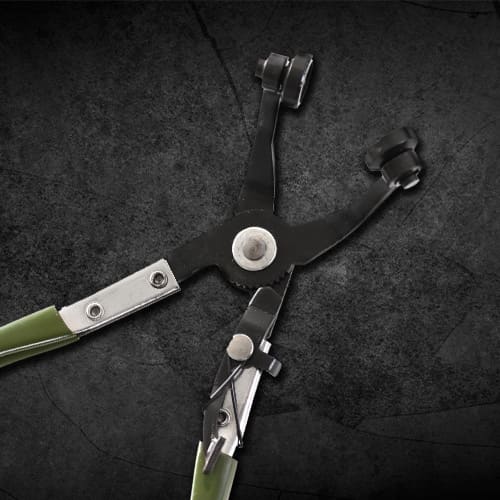
6. Hose Clamp Pliers
Hose clamp pliers, or hose clip pliers, are specialized pliers designed with two small, rounded clamps at the tip of their jaws. They simplify the process of removing, securing, or installing hose clamps on machinery or appliances. Since hose clamps must be tightly sealed to ensure proper function and prevent leaks, using the right equipment to keep them in place is essential. They help you get the job done right, reducing the need for later maintenance or repairs.
- Uses: Automotive work, plumbing, HVAC service
- Jaw length: Medium
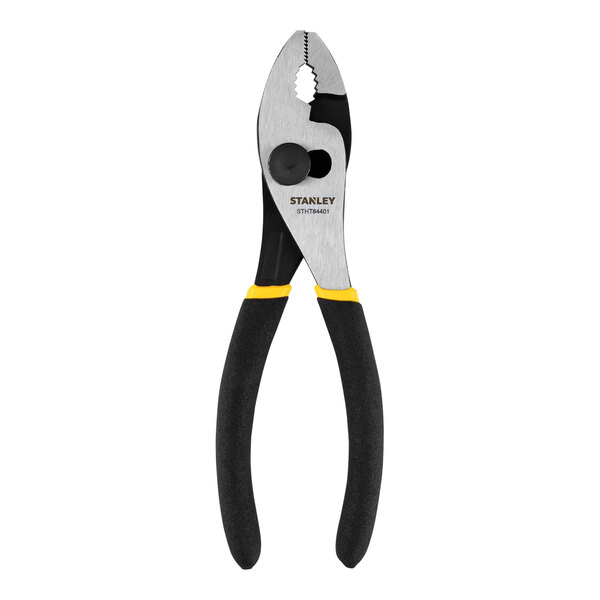
7. Slip Joint Pliers
Slip joint pliers feature an adjustable pivot point, also called a slip joint, allowing their jaws to adjust for a wider or smaller grip depending on which task you are working on. This versatility makes them a go-to option for any task that requires multiple grip sizes. Their flat, textured mouth provides a stable surface to securely grab objects, while their serrated jaws enhance grip strength. They are perfect for tightening nuts and bolts, gripping electrical components, or working with pipes or fittings, among other tasks.
- Uses: Automotive work, plumbing, general maintenance
- Jaw length: Short
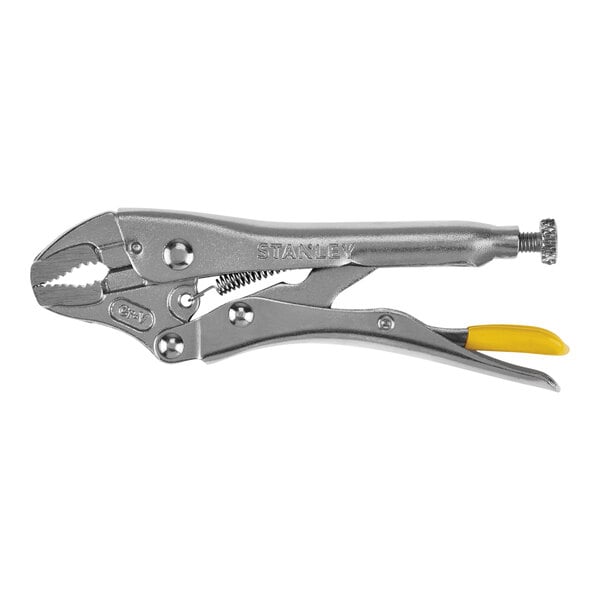
8. Locking Pliers
Locking pliers, also known as lock grip pliers, feature a specialized locking mechanism that can securely hold its jaws in place, helping you to keep both hands free to handle other tasks while still applying pressure where needed. The short, ridged jaws of locking pliers provide a strong grip, allowing you to get enhanced torque while you work. Whether you are multitasking or need an additional tool to assist you, locking pliers are a reliable choice for professionals who don’t have an extra set of hands.
- Uses: Automotive work, general maintenance
- Jaw length: Short
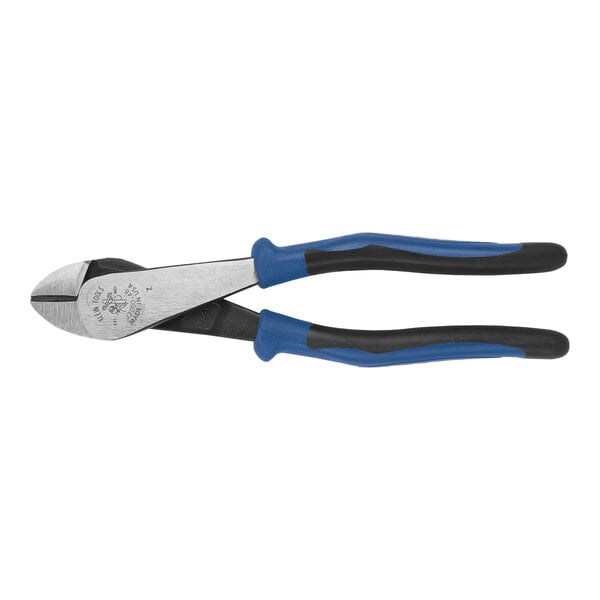
9. Diagonal Pliers
Diagonal pliers, also known as side cutters, have short, pointed jaws with a beveled cutting edge. While the edge isn’t necessarily sharp, it creates strong, precise cuts when you apply the right amount of pressure. They are ideal for cutting wire and cable to specific lengths and stripping insulation, making them essential for tasks that require precision and accuracy, such as electrical work or cable management.
- Uses: Electrical work, wire stripping
- Jaw length: Medium
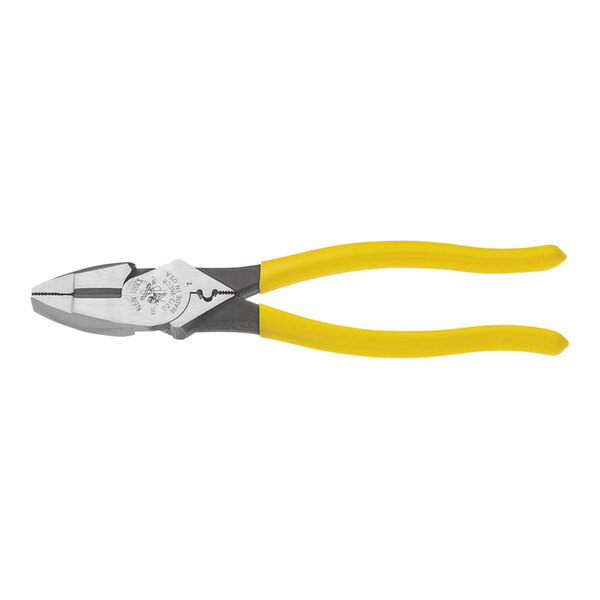
10. Crimping Pliers
Crimping pliers are specialized pliers designed to crimp metal sleeves, connectors, or terminals onto wires or cables. One of the key features of crimping pliers is their unique fulcrum placement, located close to the jaws, allowing users to apply maximum pressure with minimal effort. Their jaws feature unique indentations that compress crimping components, ensuring a tight and secure bond between the wires and terminals while preventing any loose connections that could lead to electrical failures.
- Uses: Electrical work, wire work, plumbing, artisan projects
- Jaw length: Short
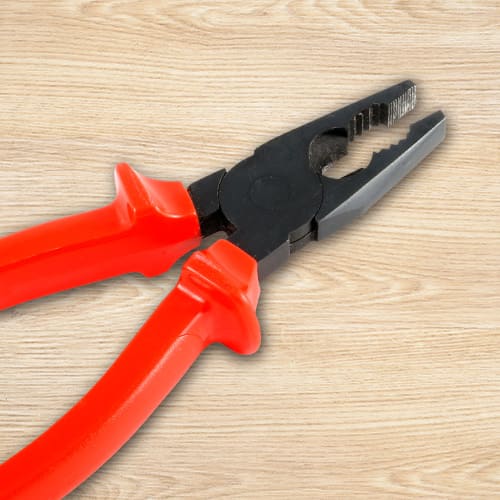
11. Combination Pliers
Combination pliers can handle a wide range of general repair tasks. With short, flat jaws, these pliers can grip and cut various materials and surfaces. Their slightly concave opening adds to their functionality, making them ideal for gripping pipes and turning bolts. Combination pliers can strip select wires, and their smaller size helps them fit into a wide range of environments for quick and convenient maintenance. If you purchase a generic or starter tool kit, chances are it includes combination pliers.
- Uses: General maintenance
- Jaw length: Short
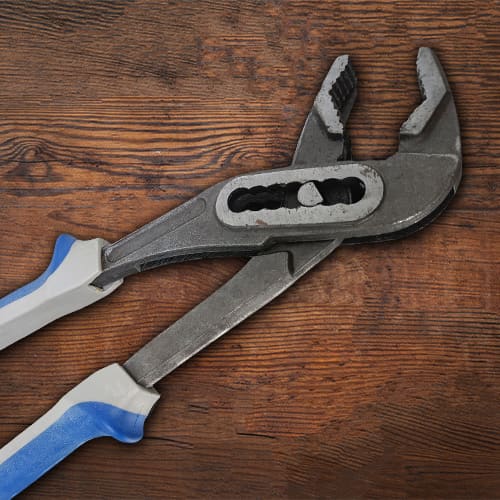
12. Waterpump Pliers
Waterpump pliers, also known as tongue-and-groove pliers, have large, angled, serrated jaws that provide a strong grip, as well as an adjustable design that can be tightened or loosened to accommodate pipes of various sizes depending on the job in front of you. As their name suggests, water pump pliers lend themselves well to general plumbing tasks and pipework. They provide a sturdy construction, a reliable grip, and a durable design, making them an indispensable tool in industrial environments.
- Uses: Automotive work, plumbing
- Jaw length: Short
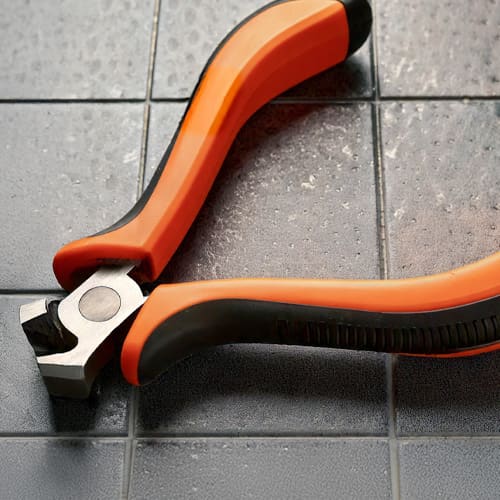
13. End Pliers
End pliers, also known as fencing pliers, feature sturdy, shaped jaws that provide superior grip strength on small objects. They look like a cross between pliers and a type of hammer and can effectively hammer staples and nails into a surface or remove them when needed. Additionally, end pliers are suitable for trimming select metal components if you apply enough pressure. Whether you’re working on electrical projects or general maintenance, these pliers provide the strength and precision needed to get the job done efficiently.
- Uses: Construction, general maintenance
- Jaw length: Short
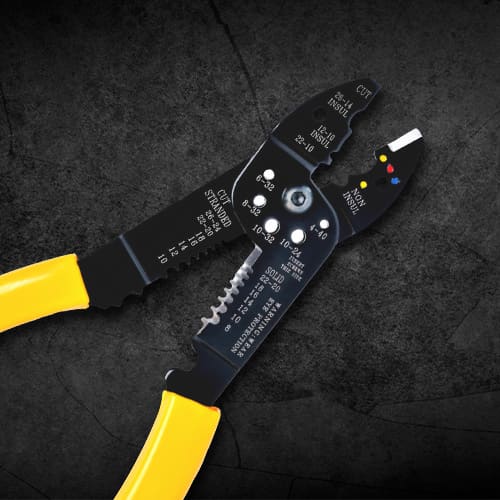
14. Wire Strippers
While wire strippers are not technically a type of plier, the two tools are often grouped together due to their similar functions. They are designed with built-in blades in their jaws to efficiently remove coatings or insulation from wires, ensuring a clean and precise cut. Wire strippers feature numerical markings along their jaws that correspond to specific wire dimensions, allowing you to easily select the appropriate setting for the wire you are working with so you can avoid damaging the wire during the stripping process.
- Uses: Wire stripping
- Jaw length: Short
Parts of Pliers
Understanding the different parts of pliers will help you choose the right tool for your commercial maintenance tasks. Whether you need a secure grip, precise handling, or cutting capabilities, selecting pliers with the appropriate features will ensure efficient and effective work.
- Handle: Plier handles let you comfortably hold the tool during use. Many pliers feature rubberized grips on the handles to provide maximum control and comfort, especially during prolonged use.
- Fulcrum: Also known as the pivot, the fulcrum is the joint where the handles and jaws connect. It allows you to control the movement of the jaws, enabling you to grip objects with precision.
- Jaws: The jaws are the main component of pliers and are used to grip objects securely. They come in various shapes, styles, and points to cater to different maintenance needs.
- Gripping surface: This is the specific surface of the jaws that comes in contact with what you are gripping. Depending on your maintenance requirements, the gripping surface can be smooth or feature serrated teeth to enhance grip strength.
- Pipe grip: A specialized part of the jaws that isn’t present in every type of pliers, the pipe grip is designed to securely hold pipes and round components.
- Cutters: Some pliers include cutters, which are sharp edges on the jaws used for cutting materials. Cutters are typically located near the fulcrum and are designed for cutting tasks.
- Teeth: The serrated edges on the jaws of pliers. They prevent slippage and ensure a secure hold.
- Point: The point of the pliers refers to the foremost end of the tool. It can be pointed, rounded, flat, or irregularly shaped, depending on the type of grip required for small parts or precise handling.
By understanding the different types of pliers and their unique features, you can ensure that you have the right tools for the job every time. Whether you’re a professional tradesperson or a DIY enthusiast, investing in quality pliers will help you work more efficiently and effectively.

